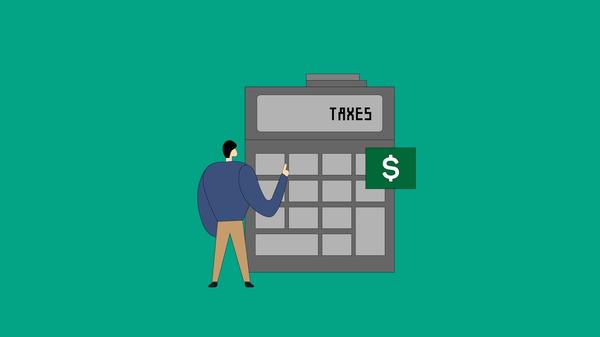This is a guest post by Kari at Money In Your Tea, Canadian personal finance expert and parent to four children, ages 20, 18, 15 and 11.
You look at your newborn baby, sleeping peacefully. Her life is so full of possibilities! You want her to have the best opportunities in life, to be whatever she wants to be someday. Now is the best time to start saving for her post-secondary education.
Investing in your Child’s Education Fund
In Canada, parents usually open an RESP (registered education savings fund) for their children. The big benefit to this, is that the federal government will match 20% of your contributions up to a maximum grant of $500 per year, and $7,200 over the lifetime of your RESP.
The best time to start contributing to your child’s education fund is when they are young. First of all, you have more years ahead of you to contribute. Secondly, the funds you save now have longer to grow through compounding.
Risk versus Return
Within your RESP, you can save risk-free in a tax-free savings account or with a guaranteed investment certificate (GIC). But at this point, you likely won’t get more than about 2% interest. And with inflation also running about 2%, you won’t really get ahead that way.
Despite the word “savings” in the middle of the name RESP, it is really an investment account, just like your retirement fund (RRSP).
Over the long term, investing in the stock market returns an average of about 7-8% per year. But any given year could be up a lot, up a little, or even down. This is the trade-off of risk versus return.
In addition, the stock market cycle tends to be about 7-10 years. That is, after a market crash, stocks tend to go up for about 7-10 years before the next big crash.
How to Invest in your Child’s Education Fund
When your children are young, you have many years to invest in their education fund. This tends to be a great time for investing. Even if the stock market goes down in the short run, you have many more years until your child is ready for post-secondary education.
Questrade is an ideal brokerage to set up your RESP. It’s the fastest growing online brokerage in Canada, and you can purchase ETFs commission-free.
A Word of Caution: Investing in your Child’s Education Fund is Different from your Retirement Fund
There are key differences in your objectives for your child’s education fund than your retirement fund.
The obvious difference is that one helps to pay for the cost of your child’s education, rather than your retirement.
But let’s dig into this a little more deeply.
You generally have from about age 20 to about age 65 to save up for your retirement. That’s 45 years!On the other hand, kids generally start post-secondary at about age 18. So you have maximum 18 years to save in their education fund.
Next, your retirement generally lasts from about age 65 to about age 85, statistically speaking, and hopefully much longer. That’s 20+ years to draw down the funds.Post-secondary education generally lasts 2-4 years, depending on the program. Sure, if your child wants to be a doctor that’s going to take more education. But that’s hard to anticipate when they’re little kids! So it’s prudent to plan for only a 4-year period where they will need these funds.
Third, you have a lot more flexibility in your retirement planning. If the stock market crashes in the year before you retire, and you haven’t protected part of your retirement fund, you can decide to work a few more years until it goes back up. But it’s much harder to ask your high school senior to delay going to university for a few years because her education fund has lost 20% of its value!
How to Decrease your Investment Risk over the Years
When the children are young, you can take on as much investment risk as you are comfortable with holding. For some people, this may be as high as 100% equities.
By middle school, children are about 5 years from heading to post-secondary. This is shorter than a typical stock market cycle. It’s prudent at this time to start transitioning to a less risky portfolio.
Keep reducing your investment risk each year as they progress through high school. Depending on your risk tolerance, you may wish to bring your equity portion down to zero by their senior year. Some people may see this is limiting your growth potential. That’s true. But I prefer to think of it as “locking in your gains”. The objective is not necessarily to get “the most” money you can in your RESP. Rather is it to get “enough” money to pay for their education expenses.
Passiv is a fabulous portfolio management tool to help you control risk through these years.
There are typically 3 sources of new money in your education fund:
- New contributions from you, the parents,
- The 20% matching grant from the federal government, and
- Dividends and interest income from your existing investments within the fund.
Passiv will help keep your investments in line with your target allocation. As each of these types of money flows into your account, Passiv will identify underweight assets in your portfolio, and recommend trades accordingly to bring you into balance.
Reducing Risk Saved my Son’s Education
In early 2020, a month before a global pandemic was declared by the World Health Organization, the stock markets crashed. We saw record-breaking daily declines, including drops so big that stock market circuit breakers were triggered time and again.
My son was finishing his final year of high school, dreaming about starting university at his top choice school in mechanical engineering.
Imagine how we would have felt if his RESP was in 100% stock market ETFs! His education fund would have dropped over 20%, just months before he would need to start withdrawing to pay for his tuition and other post-secondary school costs. The stress and worry we would have felt!
Instead, his portfolio continued to make small but steady gains right through the biggest stock market crash in over a decade.
Curious how we did this? You can read more on my website Money In Your Tea, at RESP Investing from Newborn to High School.


